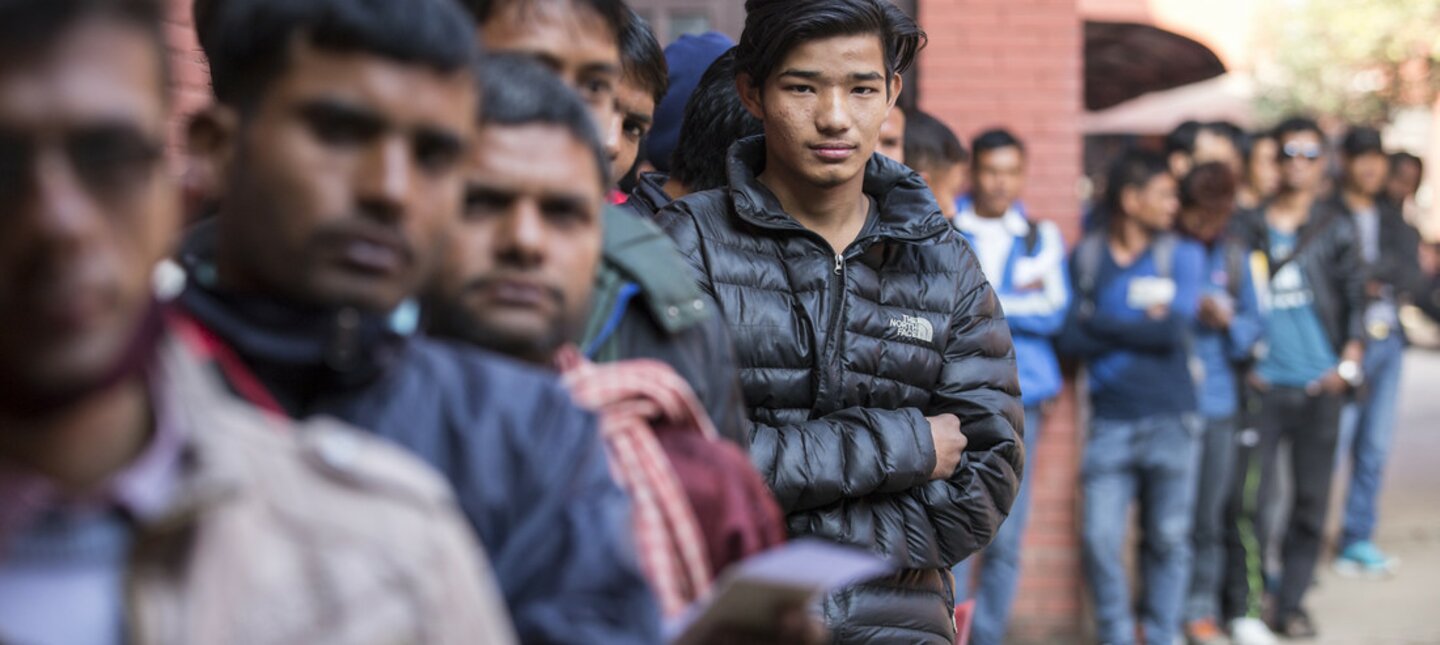Remember the COVID-19 pandemic that happened ten years ago in 2020? It was a crisis that seemed to have changed human mobility. Now in 2030, the odds are that you’re reading this from your home if you’re fortunate enough to have access to the Internet at home and the option to work remotely. It’s only when you’re stopped from traveling that you would realize how much freedom of movement has been a fundamental part of the human experience.
The pandemic shut down more than half the world in a matter of months. The global cessation of movement, or the Great Pause as we in 2030 would like to call it, was unprecedented a decade ago. Some compared COVID-19 to the 1918 pandemic, but in reality, the two global crises differed greatly: the face of global migration was much different more than a century ago. Thus, the COVID-19 pandemic had lasting migration implications long after it was gone, and the economies and the public health systems bounced back.
We lived through all that, and here we’re writing this piece to you back from the future.
Human mobility and development in 2030
At first, the paths of countries appeared to be running on separate tracks, until about 2022 when there was an inevitable convergence. In general, economic uncertainty and cultural reasons contributed to driving longstanding xenophobic rhetoric for some time. There’s still space for such views. Narrow populist victories in some European countries also meant that alternative views regarding the added value of migration continue. Push-backs against trade protectionism in favor of open trade policies brought about significant gains for human mobility.
Regional cooperation has been enforced. In the case of Europe, while Schengen survived due to the increased rise of populism, border controls became more effective and responsive with the application of artificial intelligence (AI) technologies. The number of migrants trying to cross borders fell dramatically, and that was due to expanded legal and safe channels for migrants. In 2024, most countries committed to the implementation of a global compact for safe, orderly, and regular migration.
Between 2022 and 2025, several trade agreements were concluded, bilateral as well as multilateral. Some of the isolationist stances of countries before 2022 showed that collective approaches were vital for the growth of its constituents. As countries negotiated trade agreements, the private sector pushed for mobility and access to labor markets in a bid to attract the migrant workers needed.
Countries in Africa and Europe reached deals on a wide-ranging set of migration policy agreements, allowing initially for annual quotas of migrant workers in return for more effective control of ‘irregular migration’ across the Mediterranean, and increasing the quotas over time to effectively facilitate mobility. Yet, some of the myths that we faced about migration continue.
Countries like Greece, Romania, Portugal, Italy, and Germany were running short of people to support their economies. These countries, including also Japan and China, recorded much more emigration than immigration. Due to the loss of talent and skills, many of these countries recognized the global value-added in managing human mobility through cooperation. In 2020, many of us weren’t quite sure if countries would walk the talk in treating human capital as a global resource and asset.
Better yet, as economies began to shift away from the old fossil-fuel-based technologies to renewables and green technologies, so did the demand for new talent. The nature of work transformed, inducing retraining on a massive scale, but this remained relatively limited compared to the new hires required in China and several other emerging economies in Southeast Asia and Africa. Eventually, the rural pools of workers were depleted. Demand for talented and trainable workers in more advanced economies in Asia, as well as regional hubs such as Nigeria and Brazil, changed the dynamics and geographies of labor migratory movements.
In 2029, mandatory audits of global supply or value chains started to carry out regularly. There was a global shift for quite some time. In the last three years from 2027, pension funds were among the first to pull out of oil-based investments and poured money into green economies. Economic performances are now judged with new parameters. Only economic activity that supports sustainable development is included in GDP measures. Some countries go so far as providing a GDP balance of sustainable vs unsustainable economic development.
What started last year in 2029 has very quickly rewarded the most innovative enterprises and business models. While compliance is voluntary, this year, in 2030, economies are being assessed against all 17 Sustainable Development Goals (SDGs). Some countries in Africa, Eastern Europe, and South America have shifted to green energy production and provide increasing opportunities to local youth and other vulnerable groups.
Countries have recognized the potential of migration to contribute to adaptation to climate change. Migration is integrated more comprehensively into national plans to address climate change.
Since 2021, once the United States returned to the table, the Paris Agreement became increasingly important in global efforts to combat the adverse effects of climate change and adapt to its effects, especially in the aftermath of COVID-19. Ambitions to keep global temperature rise well below 2 degrees Celsius above pre-industrial levels had been scaled up. Many countries have now agreed to limit the temperature increase to a maximum of 0.5 degrees Celsius. This year’s projections suggest that this will be possible by the end of the century.
The global economy has shifted to becoming far greener than it was a decade ago. Gender equality has grown globally. There is a notion that life has become easier and has improved when solutions, rather than confrontations, are found. It’s far costlier to build walls or virtual barriers and risk political and economic isolation. The consideration of human mobility is a clear winner.
The future is ours to shape
We all need to make migration a positive and mutually beneficial experience for countries of origin, transit, and destination well beyond 2030.
Not every development in the past ten years between 2020 and 2030 has benefited global human mobility. We’re optimistic that there’s always room for improvement. It’s never too late to think about the future because it isn’t pre-determined and each one of us can influence outcomes.
So, we placed this piece into the newly developed time-machine and sent it back to you in 2020, because the future is yours to shape. Your decisions can lead to fundamentally different outcomes. The future can be influenced by decisions at different junctures.
Countries with high migration restrictions didn’t necessarily succeed in reducing immigration. We also saw for the past ten years between 2020 and 2030 the fall in internal and international migration flows in regions with a declining youth population. Fundamental factors that have been driving human mobility for decades and centuries are still there, and they are not going to change. In addition to the deficit of the labor force in high-income countries, a growing number of people across the globe have gained access to sophisticated communications technologies, increasing the migration flows.
Related readings


